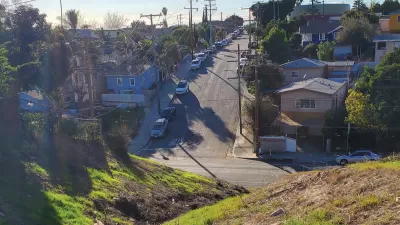This approach makes sense because parks are not isolated spaces, and park planning cannot be done effectively or holistically without considering the social, economic, physical, and political context in which parks are located.

Have you heard of "intersectional planning" as it relates to parks and recreation? Essentially, the term refers to "the integration between planning for green spaces and for other elements, such as transportation, housing, and water management," and is an approach that recognizes "parks and open space as closely connected with their neighborhoods and rely on community-driven plans to meet the diverse needs of stakeholders" (Jennings, et al. 2019).
In this article, Los Angeles County planner Clement Lau argues that park planners must think beyond park boundaries, see the big picture, and plan with interconnections in mind. Specifically, Lau focuses on the unincorporated community of West Athens-Westmont and explains how planning for parks relates to other quality of life issues like safety, land use, and transportation which affect how and whether residents travel to and use existing and future parks. This important work ties in with the 10-Minute Walk Campaign, which is a nationwide movement to ensure that everyone has safe access to a quality park within a 10-minute walk and is explained in a previous post, "A 10-Minute Walk to A Park for Your Health and Well-Being." For an overview of park planning and implementation efforts in West Athens-Westmont, also check out this video.
Reference:
Jennings V, Browning M, Rigolon, A (2019) Urban Green Spaces: Public Health and Sustainability in the United States. Springer, Switzerland.
FULL STORY: An Intentional Collision: An intersectional approach to park planning

Alabama: Trump Terminates Settlements for Black Communities Harmed By Raw Sewage
Trump deemed the landmark civil rights agreement “illegal DEI and environmental justice policy.”

Planetizen Federal Action Tracker
A weekly monitor of how Trump’s orders and actions are impacting planners and planning in America.

The 120 Year Old Tiny Home Villages That Sheltered San Francisco’s Earthquake Refugees
More than a century ago, San Francisco mobilized to house thousands of residents displaced by the 1906 earthquake. Could their strategy offer a model for the present?

In Both Crashes and Crime, Public Transportation is Far Safer than Driving
Contrary to popular assumptions, public transportation has far lower crash and crime rates than automobile travel. For safer communities, improve and encourage transit travel.

Report: Zoning Reforms Should Complement Nashville’s Ambitious Transit Plan
Without reform, restrictive zoning codes will limit the impact of the city’s planned transit expansion and could exclude some of the residents who depend on transit the most.

Judge Orders Release of Frozen IRA, IIJA Funding
The decision is a victory for environmental groups who charged that freezing funds for critical infrastructure and disaster response programs caused “real and irreparable harm” to communities.
Urban Design for Planners 1: Software Tools
This six-course series explores essential urban design concepts using open source software and equips planners with the tools they need to participate fully in the urban design process.
Planning for Universal Design
Learn the tools for implementing Universal Design in planning regulations.
Clanton & Associates, Inc.
Jessamine County Fiscal Court
Institute for Housing and Urban Development Studies (IHS)
City of Grandview
Harvard GSD Executive Education
Toledo-Lucas County Plan Commissions
Salt Lake City
NYU Wagner Graduate School of Public Service





























